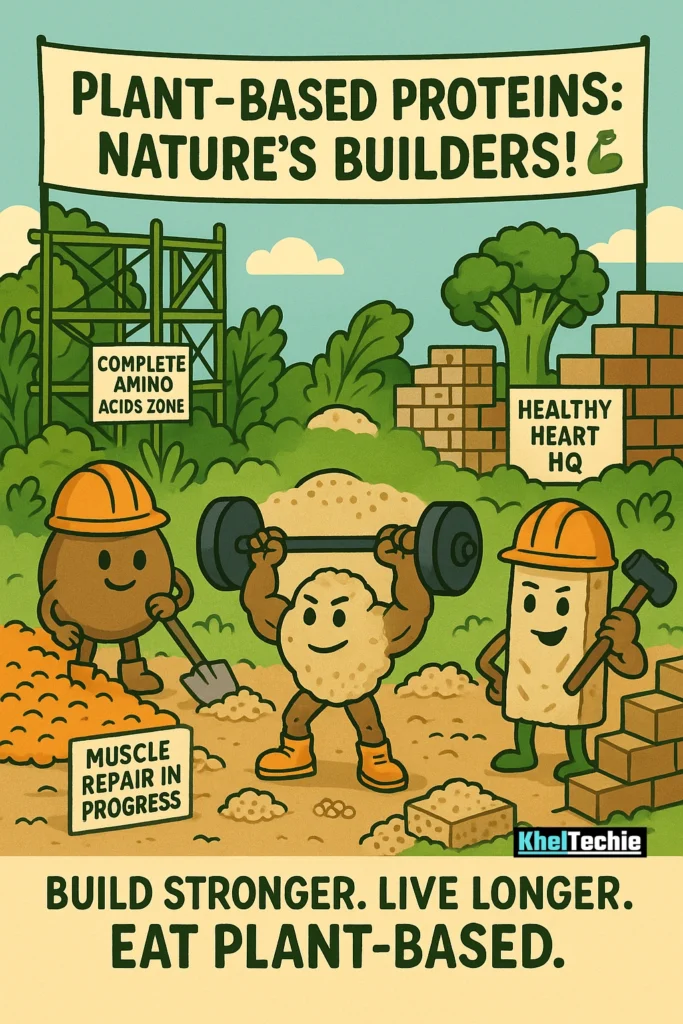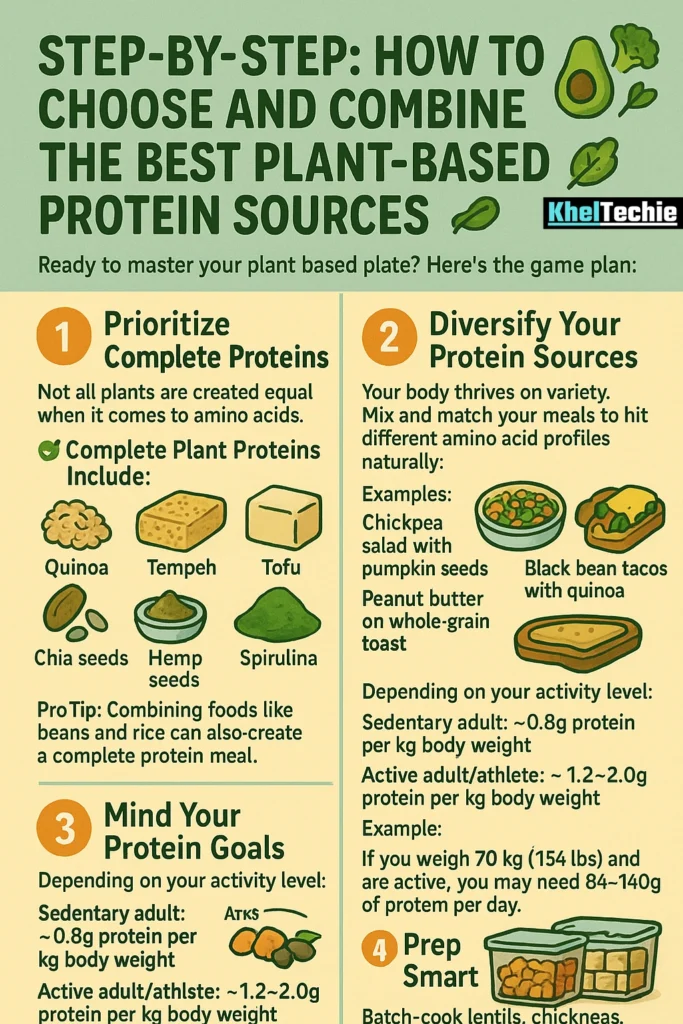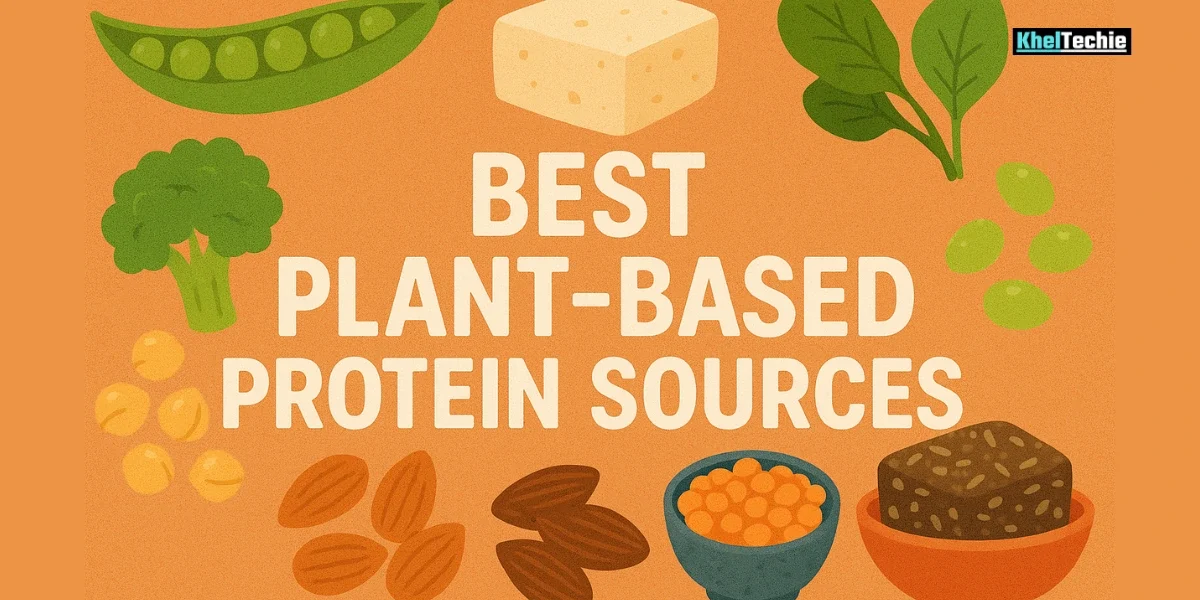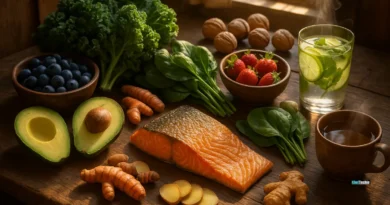Best Plant-Based Protein Sources: Fuel Your Body Naturally
Why Finding the Best Plant-Based Protein Sources Is Harder Than You Think
Ever felt like you’re swimming against the tide trying to get enough protein without touching animal products?
You’re not alone. Whether you’re a seasoned vegan, a flexitarian, or just trying to cut back on meat, getting high-quality protein can feel downright overwhelming.
Good news, it doesn’t have to be.
Today, we’re diving deep into the Best Plant-Based Protein Sources, so you can stop second-guessing your meals and start feeling strong, energized, and confident in your plant-powered choices.

What Are the Best Plant-Based Protein Sources? 🌱
Imagine your body as a bustling construction site.
Proteins are the hardworking builders keeping everything running smoothly, from repairing muscles to producing enzymes and hormones.
Without enough complete proteins (those that contain all nine essential amino acids), your body’s construction project grinds to a halt.
Plant-based foods like lentils, quinoa, and tempeh are your plant-powered construction workers, delivering quality protein to keep you at your best.
In short, The best plant-based protein sources are foods that are rich in protein and provide either complete amino acid profiles or complementary proteins when combined.
Why Choosing the Best Plant-Based Protein Sources Matters 🚀
Let’s cut through the noise
Plant-based diets aren’t just trendy, they’re transformational.
According to the Academy of Nutrition and Dietetics, well-planned plant-based diets are healthful, nutritionally adequate, and may even reduce the risk of major chronic diseases.
Stats you can’t ignore:
- 🌿 A study published in the Journal of the American Heart Association found that people who eat more plant protein have a 27% lower risk of dying from any cause.
- 💪 Athletes on plant-based diets can build muscle just as effectively as their meat-eating counterparts (source: International Society of Sports Nutrition).
Personal Story:
When I transitioned to a plant-based diet, my biggest fear was losing muscle mass. Guess what? After carefully choosing my proteins (and a lot of trial and error), I not only maintained muscle but actually felt more energized and less bloated.
It’s not about eating “less”, it’s about eating smarter.

Step-by-Step: How to Choose and Combine the Best Plant-Based Protein Sources 🥑🥦
Ready to master your plant-based plate? Here’s the game plan:
1. Prioritize Complete Proteins
Not all plants are created equal when it comes to amino acids.
✅ Complete Plant Proteins Include:
- Quinoa
- Tempeh
- Tofu
- Buckwheat
- Chia seeds
- Hemp seeds
- Spirulina
Combining foods like beans and rice can also create a complete protein meal.
2. Diversify Your Protein Sources
Your body thrives on variety. Mix and match your meals to hit different amino acid profiles naturally.
Examples:
- Chickpea salad with pumpkin seeds
- Black bean tacos with quinoa
- Peanut butter on whole-grain toast
3. Mind Your Protein Goals
Depending on your activity level:
- Sedentary adult: ~0.8g protein per kg body weight
- Active adult/athlete: ~1.2–2.0g protein per kg body weight
Example:
If you weigh 70 kg (154 lbs) and are active, you may need 84–140g of protein per day.
4. Prep Smart
Batch-cook lentils, chickpeas, and tofu ahead of time.
That way, you’ll always have a protein-packed option ready when hunger hits.
Common Mistakes When Choosing Plant-Based Protein Sources And How to Dodge Them ❌
1. Relying Too Heavily on Processed Foods
Sure, vegan nuggets and burgers taste great, but they can be high in sodium, preservatives, and additives.
Better choice: Focus on whole foods like lentils, chickpeas, nuts, and seeds first.
2. Forgetting About Variety
Eating tofu every day? Boring and limiting.
Rotate your proteins to ensure you’re covering all essential amino acids and getting a full spectrum of vitamins and minerals.
3. Ignoring Nutrient Absorption
Some plant foods contain antinutrients like phytates, which can block mineral absorption.
Solution:
Soak beans, sprout grains, and ferment foods like tempeh to boost bioavailability.
4. Skipping B12 Supplementation
Plants don’t naturally produce vitamin B12.
Be smart, supplement it to avoid deficiencies.

Top 12 Best Plant-Based Protein Sources
| Protein Source | Grams of Protein (per 100g) | Bonus Benefits |
|---|---|---|
| Tempeh | 19g | Gut health (fermented) |
| Lentils | 9g | High in fiber |
| Chickpeas | 9g | Heart health |
| Quinoa | 8g | Complete protein |
| Tofu | 8g | Versatile for cooking |
| Edamame | 11g | Rich in iron |
| Hemp Seeds | 32g | Omega-3 fats |
| Chia Seeds | 17g | High fiber |
| Pumpkin Seeds | 19g | Magnesium boost |
| Almonds | 21g | Healthy fats |
| Black Beans | 8g | High antioxidants |
| Nutritional Yeast | 50g | B12 powerhouse |
Conclusion: Your Next Steps Toward Plant-Based Protein Mastery 🌟
You’re armed with the knowledge now.
You know which foods to stock, how to combine them, and how to avoid the biggest plant-based pitfalls.
So here’s your challenge:
Plan your next meal around one of the best plant-based protein sources you learned today.
Get creative, have fun, and remember, fueling your body naturally is one of the most powerful gifts you can give yourself.
🌱 What’s your favorite plant-based protein? Drop a comment below, I’d love to hear your go-to meals! 🌱
FAQs
Are Plant-Based Proteins Complete?
Some are! Quinoa, soy products (tofu, tempeh), hemp seeds, and chia seeds provide all nine essential amino acids.
Can I Build Muscle With Plant-Based Proteins?
Absolutely,
Studies show plant-based athletes can build and maintain muscle mass effectively with proper protein intake and resistance training.
What’s the Best Plant-Based Protein for Weight Loss?
Lentils and chickpeas are top picks.
They’re low in fat, high in fiber, and super satiating — keeping hunger at bay.
How Much Protein Do Vegans Need Per Day?
Generally, aim for 1.2–2.0 grams per kg of body weight, depending on your activity level
Is Tofu or Tempeh Healthier?
Both are excellent!
Tempeh is slightly higher in protein and fiber due to fermentation, making it a gut-friendly option.
What Are Good High-Protein Vegan Snacks?
Roasted chickpeas
Protein bars (low-sugar)
Almond butter on celery
Hemp seed smoothies
Are Plant-Based Protein Powders Necessary?
Not always.
If you’re struggling to meet your daily needs or are an athlete, a clean plant-based protein powder can help.
What’s a Cheap Source of Plant-Based Protein?
Lentils and black beans are incredibly affordable, costing mere cents per serving.
Which Plant-Based Protein Is Easiest to Digest?
Tempeh and sprouted legumes are easier on the gut compared to raw beans or whole grains.





Pingback: Best Iron-Rich Foods For Anemia That Boost Energy Fast
Pingback: Vegetarian Keto Meal Plan For Beginners: A Tasty Way
Pingback: 7 Gut-Healing Smoothie Recipes For Bloating & Digestion
Pingback: 8 Surprising Coriander Health Benefits: Digestion, Skin, Immunity
Pingback: 7 Rhubarb Benefits You Need To Know In 2025 Myths Busted!
Pingback: Best Vegan Protein Sources For Athletes: Build Muscle Now
Pingback: Anti-Inflammatory Diet Meal Plans: 7-Day Guide
Pingback: Easy Rainbow Eating Diet Meal Plan For Beginners